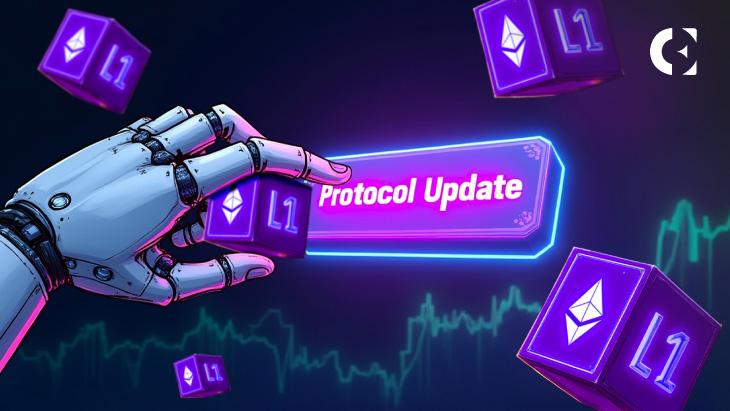The Ethereum Foundation has Marius van der Wijden as co-lead for its Scale L1 initiative alongside Ansgar Dietrichs and Tim Beiko. The restructured leadership aims to accelerate Ethereum’s layer-1 scaling efforts while maintaining protocol security and decentralization principles.
The Ethereum Foundation has Marius van der Wijden as co-lead for its Scale L1 initiative alongside Ansgar Dietrichs and Tim Beiko. The restructured leadership aims to accelerate Ethereum’s layer-1 scaling efforts while maintaining protocol security and decentralization principles.
Van der Wijden’s extensive Geth engineering background and protocol security focus position him to align scaling strategies with technical constraints. The appointment comes as the foundation reorganizes its research and development teams around three strategic goals: Scale L1, Scale Blobs, and Improve UX.
Recent client team improvements at the Berlinterop event enabled the mainnet’s gas limit increase to 45 million. This created the first milestone toward the ambitious 100 million gas target. Parithosh Jayanthi leads incremental scaling efforts with support from Nethermind’s PerfNet team.
Client hardening was incorporated into the gas limit adjustment program after network instability events during the Pectra upgrade deployment. The program guarantees client robustness in the event of throughput enhancements, even when the network loses its finality briefly.
History Expiry deployment lowered node storage needs through the elimination of pre-Merge history, freeing full nodes around 300-500 GB of disk space. Rolling History Expiry development still cuts history outside of fixed retention windows, maintaining storage needs in check as Ethereum scales.
Block-Level Access Lists by Toni Wahrstaetter are proposed as a top feature of the Glamsterdam upgrade. BALs would enable the execution of transactions in a block and the calculation of the state root concurrently.
The technology facilitates preloading the needed state at the block start of execution, enhancing disk access patterns and node sync effectiveness. All these features together facilitate ability to process higher gas limits and quicker block processing in a stable manner.
Ansgar Dietrichs benchmarking is focused on maintaining gas costs in proportion to computational load to eliminate performance bottlenecks. Carlos Pérez’s benchmarking experiments are conducted on Bloatnet with double current state sizes and 100-150M gas limits.
Kevaundray Wedderburn’s zkEVM attester client development assumes real-time proof availability for block validation. The prototype would allow nodes to verify zero-knowledge proofs instead of executing all transactions directly.
Initial rollout will offer optional verification mechanisms for small node groups to build confidence in robustness and security. Gradual transition to zk-based validation could eventually become the default, enabling substantial gas limit increases.
RPC node performance research addresses distinct challenges that different node types face as throughput increases. The Ethereum Foundation seeks a Performance Engineering Lead to expand expertise in this domain, with applications closing August 10.
